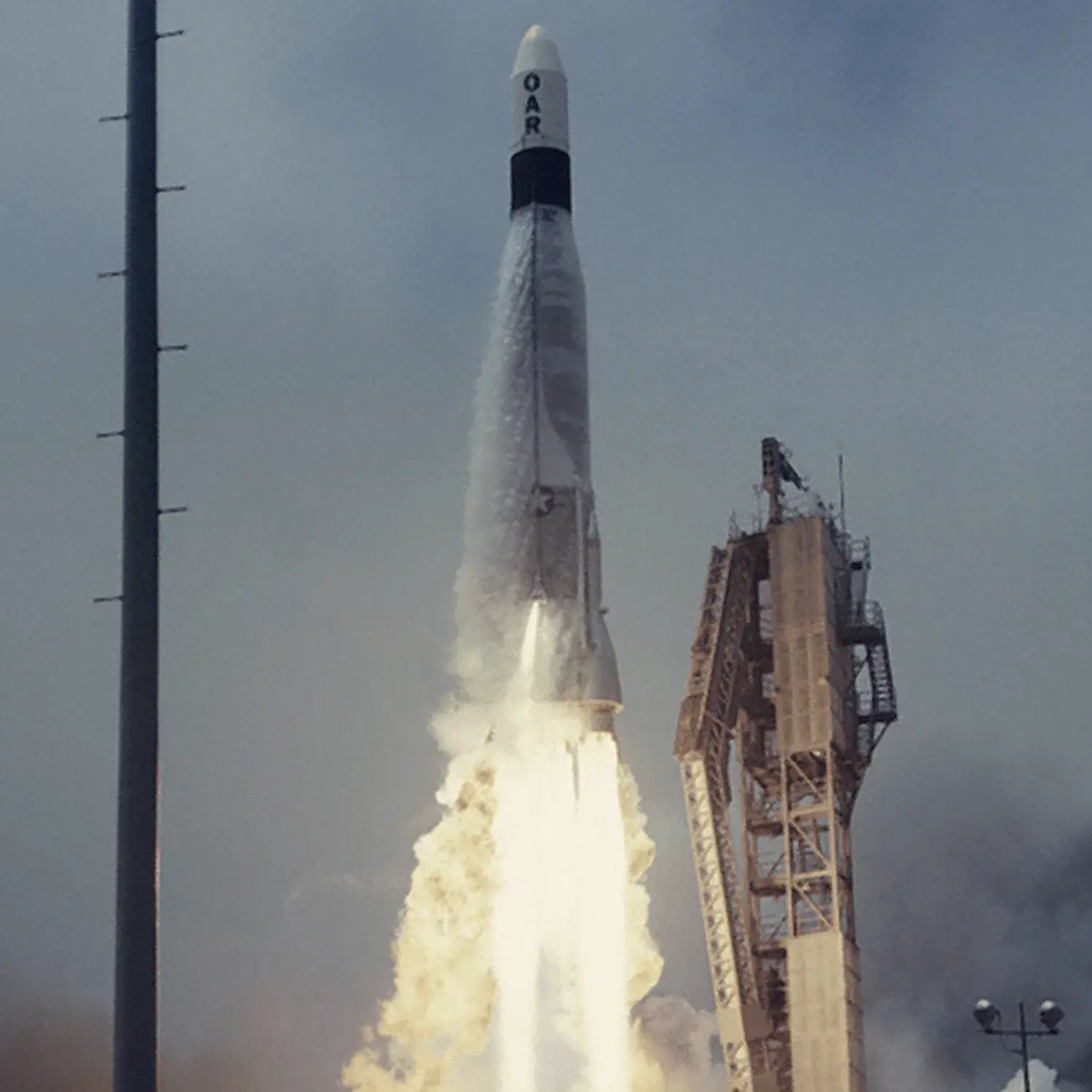OV1-15/OV1-16
Launch Success
Liftoff Time (GMT)
19:30:00
Thursday July 11, 1968
Mission Details
OV1-15
OV1-15 also referred to as SPADES (Solar Perturbation of Atmospheric Density Experimental Satellite), was designed to study synoptically the fluctuations of atmospheric density, composition, and temperature as a function of solar magnetospheric disturbances. The cylindrical spacecraft, 69 cm in diameter, was 1.4 m long. Electrical power was supplied by solar cells mounted on multifaced domes on each end of the spacecraft. OV1-15 was spin-stabilized. The instrumentation consisted of a microphone density gauge, an ion gauge, mass spectrometers, energetic particle detectors, solar X-ray, and UV flux monitors, an ionospheric monitor, and a triaxial accelerometer. The spacecraft performed normally after launch, and re-entered the earth's atmosphere on November 6, 1968, after successfully completing the mission objectives.
Low Earth Orbit
1 Payload
215 kilograms
OV1-16
The OV1-16 satellite was a high-density, 63-cm diameter spherical spacecraft specifically designed to obtain accurate density data at very low altitudes (100 km). The principal active experiment was a triaxial accelerometer that measured satellite acceleration near perigee. Atmospheric densities were then computed from these data. The sphere also contained a c-band tracking beacon for drag density determination. Batteries and appropriate logic, timing, telemetry, and command and control equipment were also aboard. There was no onboard tape recorder, but real-time telemetry data were obtained during 199 passes over 12 stations.
Low Earth Orbit
1 Payload
272 kilograms
Rocket

Launch Site
Stats
Atlas-OV1
9th
Mission
2nd
Mission of 1968
1968
65th
Orbital launch attempt
